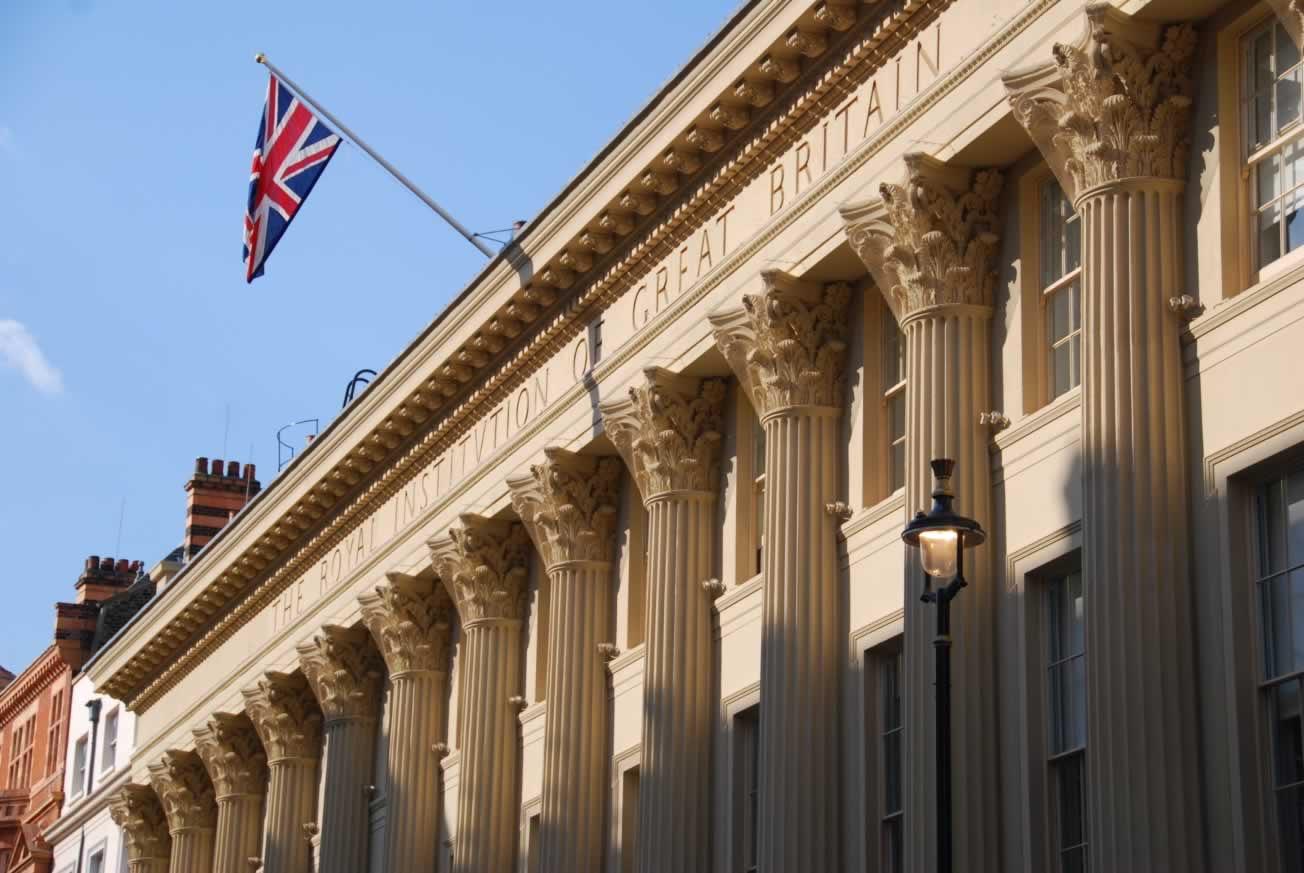 One of the most ancient buildings and collections from Britain’s history of science may have to sell itself, and David Attenborough and Richard Dawkins aren't happy about it. Founded in London in 1799, the Royal Institution hosts a museum, science talks and the semi-famous Christmas lectures.
One of the most ancient buildings and collections from Britain’s history of science may have to sell itself, and David Attenborough and Richard Dawkins aren't happy about it. Founded in London in 1799, the Royal Institution hosts a museum, science talks and the semi-famous Christmas lectures.
It’s easy to argue that we should preserve it. After the RI put itself up for sale, in no time at all Attenborough, Dawkins and others wrote to the Times to plead for the RI. They claimed that it’s “just as precious as any ancient palace or famous painting”. The internet campaign is now in full swing on LinkedIn groups, Wordpress sites and Twitter. Backstage, of course, powerful people are talking about how to save the RI. There are even rumours of a corporate saviour—possibly because of the recent appearance at the RI by the science-friendly philanthropist Bill Gates.
But the RI’s public defence so far feels rather slapdash. For the most part, it’s relying on the RI’s prestige and heritage. The argument for heritage is shrewd, and detailed by science historian and blogger Rebekah Higgitt. In just a few short paragraphs, Higgitt explains that places like the RI are significant because they combine immovable heritage such as the building at 21 Albemarle Street itself, moveable heritage in its ancient books and scientific instruments, and intangible heritage in its tradition of experiment. While science communication should no longer take place only in hallowed halls, Higgitt argues, we should not tear them down because they remind “us that science is not disembodied, pure knowledge, but that it is created by people in particular times and places, with particular equipment and in response to the demands and possibilities of the society in which they inhabit”.
Higgitt’s is probably the strongest defence of the RI I’ve seen so far. But arguments that rely both on heritage and prestige alone just don’t cut it. I want to hear them, but without other kinds of evidence, they’re weak. Fortunately, the RI has some hard stats too: attendance at evening events grew last year almost by half on the figure for 2009; 136 schools events were delivered in 2012, reaching nearly 13,000 youngsters; and the RI’s online video project is approaching one million video views.
However, I haven’t yet seen any analyses that pitch the RI’s running costs against, say, the number of schoolchildren who are inspired by the RI to become scientists. Or a ranking of the RI’s position among all the other science museums, festivals, pop-up events, sceptics’ circles and lab open days that go on. The RI spokeswoman I called yesterday said that she wasn’t aware of any such research, and that the RI’s budget was too low to fund something that deep.
I wouldn’t say that number crunching is more reliable than emotion—I’d prefer to see both. If a politician wants the abortion limit moved, she ought to present both medical research and her feelings on the topic. Likewise, I’d have thought that the RI’s defenders would want to see a thorough study of its costs and the effect it has on people. Without this, defending the RI disrespects the scientific method because it relies on selective data, ideology and anecdotes. To defend the RI because it gives you a warm feeling isn’t good enough.
I’m sure that people have an affinity for the RI because of their personal connections to it: either they’re a scientist who has been involved in its programmes or they were once a child inspired by a visit. I’d never heard of the RI while I was growing up, despite being a major science nerd. Even now as an adult working around science, I don't feel an affinity for the place. But what's the point of me saying that it’s never inspired me while Dawkins screeches, "Well it inspires others so it is good"? We'd just be having an argument. The problem is there’s no objective way to assess stories. Some nice numbers and a study of science communication venues might cut through these stories and move the debate on.
More dangerous than making a purely ideological defence is focusing so much on the building and its contents as being “pivotal”in communicating science. This skips over the ultimate goal of science communicators, which is surely to instill the scientific method in people. It’s easy to say that we should save Michael Faraday's magnetic lab, preserved as it was in the 1850s in the RI’s basement, because it can help people to understand the research he did.
But spotlighting historic artefacts like this risks forgetting that science is a permanent revolution. Scientists live in the future: as they accumulate evidence, their suggestions for explaining the world change. Each new experiment builds on the one before it, so scientific history is wrapped up in science itself. For example, inherent in the first approved gene therapy is the original work of Crick and Watson in describing the DNA molecule. And just as science expands and mutates what is already known, it can also ditch this if there’s enough evidence to show that what was previously known doesn’t fit anymore. Looking at the cutting-edge of science is to learn that every step a researcher takes is one step further than Charles Darwin or Ada Lovelace ever got.
Whether we need a building or an institution or something less monolithic to communicate the adventure of the scientific method isn’t a question I’ve heard many people ask. Higgitt hints that there may be people who prefer to see science as “disembodied, pure knowledge”. Well, it is. But we can still anchor it if we want. There are countless labs around the world, from research institutes to the hands of a child who tortures a writhing worm. Maybe we should admit that science is only a concept, and then we can apply it anywhere—in a university, in your garden or even in your mind, but rarely in a posh and centuries-old Mecca in Mayfair.

